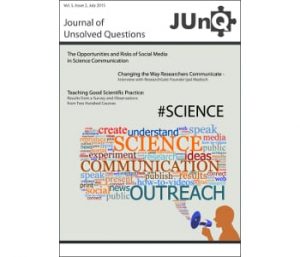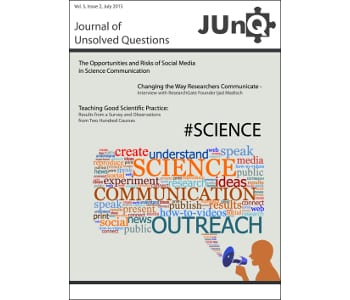 The communication of science to the public has altered due to the increasing use of the internet. In particular, social media is an important tool for scientists for directly addressing and interacting with their audience. Besides the changes that come with an increasing digitalization, social media exhibit benefits as well as risks.
The communication of science to the public has altered due to the increasing use of the internet. In particular, social media is an important tool for scientists for directly addressing and interacting with their audience. Besides the changes that come with an increasing digitalization, social media exhibit benefits as well as risks.
Thorsten Witt and Markus Weißkopf from Wissenschaft im Dialog, a German institution for science communication, describe the changes, opportunities and risks of science communication through social media in their article for the newest issue of the Journal of Unsolved Questions (JUnQ). They concentrate on external communication, which means outreach purposes of scientists to the general public.
For researchers the opportunities are visibility, reputation and credibility – each of these three items can also affect the career of a scientist or the financial support of a project. By doing so, they can also reach a much broader audience via several channels. However, the role of mediator of press spokesmen and journalists is lost as scientists themselves write or speak about their research. This, on the one hand, leads to an increasing responsibility about the topics as well as the manner they share their knowledge. On the other hand, taking an active role in social media, e. g. by maintaining a blog, is rather time-consuming. But nonetheless, nowadays social media play an essential role in the media landscape and have to be integrated in the communication of science.

















